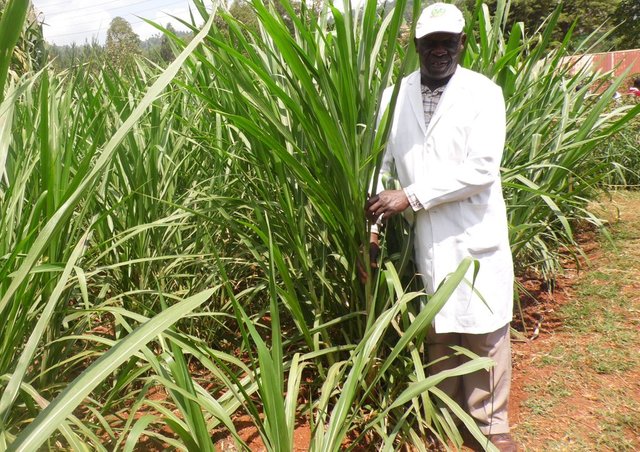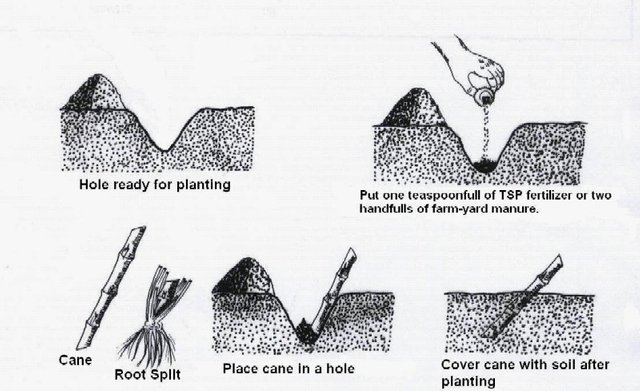Dairy Farm #part 3 | End of Cows Food Crisis
There is no substitute for raw grass to increase cow milk production. Grass is not only for the growth of the cow's milk production, it is possible to meet other expenses by cultivating grass, by dividing it. Besides, if the raw grass is easy, it will be easier to observe the cow. So grass has to be cultivated in modern methods. Therefore, it is necessary to cultivate high yielding grasses. Our country has a developed grass, which is much more than other grasses. It is possible to grow grass in almost all areas of any place and from that time it is possible to meet the demand for raw grass for almost all year. The name of the grass is Napier. A type of permanent grass in Napier. Looks like sugarcane, it is 6-12 feet taller or more. This grass is fast, easy to grow, nourishing, easy-to-eat and drought tolerant. Once planted, it yields 3/4 years of yield.

Napier grass is best suited to high rainfall areas, but it is drought-tolerant and can also grow well in drier areas. It does not grow well in waterlogged areas. It can be grown along with fodder trees along field boundaries or along contour lines or terrace risers to help control erosion. It can be intercropped with crops such as legumes and fodder trees, or as a pure stand.
Napier grass can be planted all year round. Usually it is better to plant in the monsoon season. Cutting or sowing of this grass is done at the beginning of the monsoon. After the first rain in the month of June–July, the soil may be cut by 3/4 times in the first year after planting or cutting in the field. After planting or cutting, if the sun is sunny or the soil is low then irrigation of the seedlings should be irrigated.

Plant them angled into the ground at about 30 degrees, so two of the nodes are buried in the soil and one is above the ground. Plant more rows with a spacing of about 90 cm (3 feet) between the rows. Planting “slips” or “splits”* If you planting “slips” or “splits”, you do not have to wait a long time for the grass to grow before you can multiply it. Seedlings from the slips become established more quickly than those grown from cuttings. Cut Napier grass stems at ground level to remove all the green material. Dig up the clump of roots and shoots growing under the ground. Separate each seedling from the clump. Each seedling must have both roots and a shoot. Trim the roots to about 5 cm (2 inches) long. Plant the seedlings in small holes or a furrow. Cover the roots with soil, but leave the shoots open to the air. Planting whole stems is useful during the heavy rains, and in hilly areas where you need the grass to sprout quickly to cover the ground. Plant them along the contour to control erosion. Cut whole young stems of Napier grass, about 2 m (6 feet) long. Put the stems end-to-end in a furrow, and cover them with soil. Water immediately.
Weed the Napier grass plot regularly. If any of the cuttings die, fill in the gaps with new ones. Harvest the grass when it is 90_120 cm (3_4 feet) high. Harvest the grass following a pattern. Beginning at one end of the row, cut enough grass to feed your animals for 1 day. The next day, cut the next grass along in the row. Carry on until you reach the end of the row. In this way, you will always be able to cut fodder for your livestock. Apply liquid manure by digging trenches in between the rows of grass. Pour liquid manure into the trenches If the livestock do not eat all the grass, use the remainder as mulch or compost. Cut the grass 15_25 cm (6_10 inches) above the ground. Some farmers have found it is better to cut at ground level, though this may damage the plant too much. Fill in any gaps in the rows with fresh cuttings. Don’t use older stems as planting materials, as they will not germinate well. Don’t intercrop with cereals, as the grass will compete with the crop for nutrients and light. Don’t allow animals to graze on the napier grass, as they may damage or kill the plants. Don’t allow the grass to overgrow, as it may become a weed. Don’t allow the grass to grow too high (more than 120 cm or 4 feet), as Goats will not eat the tough bits.
Fertilizer application and water irrigation: There is a need for fertilizer and water for better yield and tree growth. Rainwater does not require irrigation. But at other times it is usually necessary to irrigate water.
Alert: Urea can be produced from nitrate or nitrite grass in the soil after several days of drought after applying urea fertilizer in Napier land, and after this, it is risky to feed these growing grasses after rising more rain. It can cause toxicity.
When cutting the grass, use the following precautions to keep livestock free from the effects of poisoning.
(1) Harvesting of the soil should not be cut by 2 weeks.
(2) After a long drought after fertilization, suddenly the grass should not be eaten after the excessive rainfall.
(3) The fertilizer should be sprayed before one month of cutting the grass.
Napier's high yielding grass. Through this grass cultivation it is possible to meet the demand for livestock raw grass. If proper use of raw grass / sillage can be done properly, milk production will be increased which can gradually meet the country's milk needs. As the milk prices are increasing in our country recently, as the milk production increases, the financial flexibility of the farmers will increase as well and the financial condition of the country will also improve.
The advantage of napier grass is that it propagates easily. It has a soft stem that is easy to cut. It has deep roots, so is fairly drought-resistant. The tender, young leaves and stems are very palatable for livestock and grows very fast
The disadvantage is that it is an aggressive plant that spreads through rhizomes under the ground. If it is not controlled, it can invade crop fields and become a weed. The older stems and leaves are less palatable for Goats.
Hello! I find your post valuable for the wafrica community! Thanks for the great post! @wafrica is now following you! ALWAYs follow @wafrica and use the wafrica tag!
Congratulations! This post has been upvoted from the communal account, @minnowsupport, by $pkalmik from the Minnow Support Project. It's a witness project run by aggroed, ausbitbank, teamsteem, theprophet0, someguy123, neoxian, followbtcnews, and netuoso. The goal is to help Steemit grow by supporting Minnows. Please find us at the Peace, Abundance, and Liberty Network (PALnet) Discord Channel. It's a completely public and open space to all members of the Steemit community who voluntarily choose to be there.
If you would like to delegate to the Minnow Support Project you can do so by clicking on the following links: 50SP, 100SP, 250SP, 500SP, 1000SP, 5000SP.
Be sure to leave at least 50SP undelegated on your account.
@resteemator is a new bot casting votes for its followers. Follow @resteemator and vote this comment to increase your chance to be voted in the future!